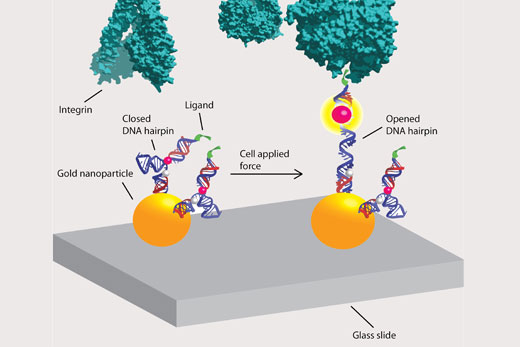Adherent cells, the kind that form the architecture of all multi-cellular organisms, are mechanically engineered with precise forces that allow them to move around and stick to things. Proteins called integrin receptors act like little hands and feet to pull these cells across a surface or to anchor them in place. When groups of these cells are put into a petri dish with a variety of substrates they can sense the differences in the surfaces and they will “crawl” toward the stiffest one they can find.
Now chemists have devised a method using DNA-based tension probes to zoom in at the molecular level and measure and map these phenomena: How cells mechanically sense their environments, migrate and adhere to things.
Nature Communications published the research, led by the lab of Khalid Salaita, assistant professor of biomolecular chemistry at Emory University. Co-authors include mechanical and biological engineers from Georgia Tech.
Using their new method, the researchers showed how the forces applied by fibroblast cells are actually distributed at the individual molecule level. “We found that each of the integrin receptors on the perimeter of cells is basically 'feeling' the mechanics of its environment,” Salaita says. “If the surface they feel is softer, they will unbind from it and if it's more rigid, they will bind. They like to plant their stakes in firm ground.”

